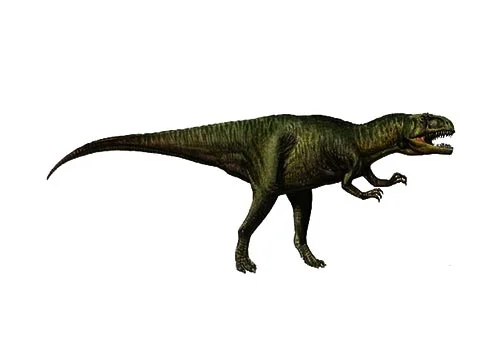Gasosaurus (Gas lizard)

Ga-so-sore-us
Dong Zhiming and Tang Zilu – 1986
Carnivore
Estimated 4 meters long
Small Theropod
G. constructus (type)
China, Sichuan Province - Lower Shaximiao Formation
Mid Jurassic, 170 million years ago
Gasosaurus Facts
Gasosaurus, meaning “gas lizard”, is a genus of theropod dinosaur that lived during the Jurassic period, around 170 million years ago. Its fossils were first discovered in Dashanpu, China in 1985, and the genus was named and described by Chinese paleontologists Dong Zhiming and Tang Zilu in 1986.
The holotype specimen of Gasosaurus consists of a nearly complete skeleton, with the exception of the tail and parts of the hind limbs. Based on the size and shape of the bones, scientists estimate that Gasosaurus was around 4 meters (13 feet) long and weighed between 200 and 300 kilograms (440 to 660 pounds).
Gasosaurus belongs to the group of theropod dinosaurs known as tetanurans, which also includes well-known dinosaurs such as Allosaurus and Tyrannosaurus. Like other tetanurans, Gasosaurus was bipedal and had a large head, sharp teeth, and powerful arms.
One of the most notable features of Gasosaurus is the structure of its teeth. Unlike other theropod dinosaurs, which typically had serrated teeth for cutting flesh, Gasosaurus had small, peg-like teeth that were better suited for crushing and grinding. This suggests that Gasosaurus had a more herbivorous diet than other theropods, although it likely still ate some meat as well.
Another interesting feature of Gasosaurus is the shape of its arms. Unlike other theropods, which typically had arms that were shorter than their legs, Gasosaurus had arms that were nearly as long as its legs. This suggests that Gasosaurus may have used its arms for grasping and manipulating objects, much like modern-day birds use their wings for similar purposes.
Based on the structure of its bones, scientists believe that Gasosaurus was a relatively fast runner, capable of reaching speeds of up to 30 kilometers per hour (18 miles per hour). Its long, slender legs would have been well-suited for running, while its powerful arms may have helped to maintain balance and stability while in motion.
Gasosaurus is an important dinosaur for paleontologists because it provides valuable insights into the evolution of theropod dinosaurs. Its unique combination of features, including its tooth structure and arm shape, help to fill in gaps in our understanding of how theropods evolved and adapted to their environments over time.
In conclusion, Gasosaurus is an important and fascinating dinosaur that sheds light on the diversity of theropod dinosaurs during the Jurassic period. Its herbivorous tendencies and unique arm structure set it apart from other theropods, and its swift running abilities likely helped it to thrive in the ancient ecosystems of its time. As more fossils are discovered and studied, we are likely to learn even more about this enigmatic dinosaur and its place in the evolutionary history of the theropod dinosaurs.



